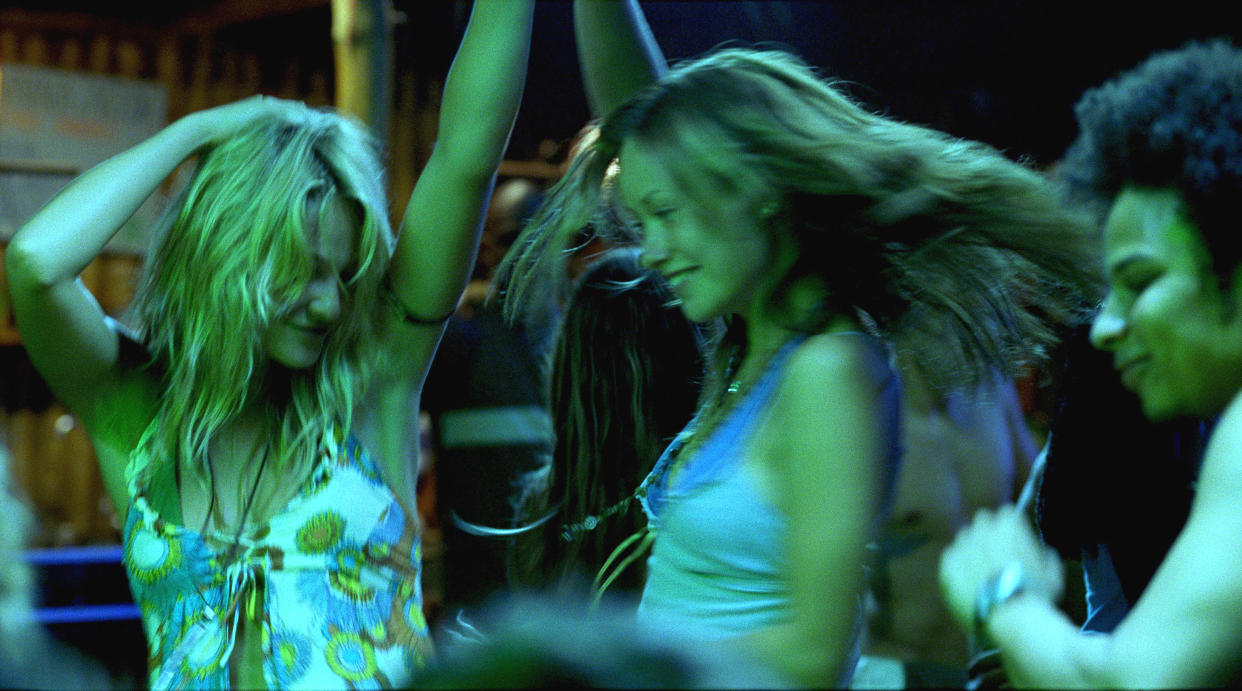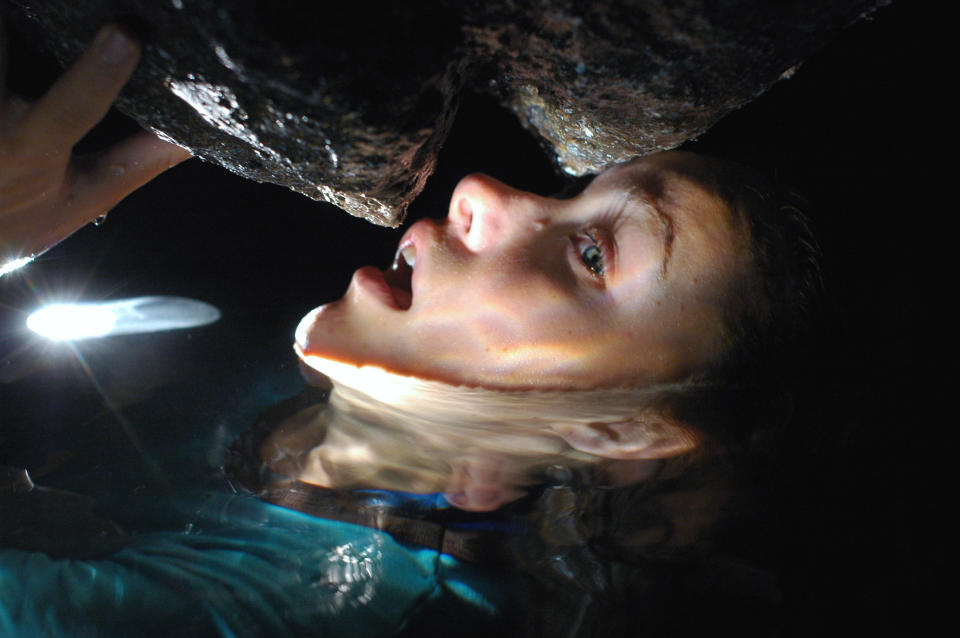‘Turistas’ Was Always More Than a Cheap ‘Saw’ Knockoff or So-Called ‘Torture Porn’

When James Wan and Leigh Whannell‘s “Saw” hit theaters a couple days before Halloween in 2004, it wasn’t the first horror movie of its type — “Cube” and “Kolobos” had already given us characters who find themselves isolated in rooms full of elaborately deadly traps back in the late ’90s — but it was certainly the most popular, raking in roughly a hundred times its $1.2 million budget and spawning nine sequels (and counting). It was also the most influential, inspiring a cycle of modestly resourced horror films notorious for their prolonged set pieces of graphic violence. These movies ranged from the brilliant (Eli Roth‘s first two “Hostel” movies) to the inane (the pointlessly unpleasant “Captivity”), but they all got lumped together in the unfortunate category of “torture porn.”
David Edelstein popularized the “torture porn” label in a piece timed to the release of “Hostel,” and the term really got a workout from lazy critics and pundits who applied it to movies as disparate as Rob Zombie’s “The Devil’s Rejects,” the Australian import “Wolf Creek,” and the feminist rape-revenge movie “Baise-Moi,” which came out in 2000 and thus received the designation retroactively. The only thing these movies really had in common was explicit gore, something they also had in common with a few thousand other horror movies going back to Herschell Gordon Lewis — not to mention network TV procedurals like “Criminal Minds,” which premiered in 2005, the same year as “Hostel” and “Wolf Creek.” But the “torture porn” tag made it possible for people who didn’t like the films (and, perhaps more significantly, people who hadn’t even seen them) to dismiss an entire genre with no need to back up their argument — calling something “torture porn” was enough to condemn it as trash.
More from IndieWire
That’s what happened to producer-director John Stockwell’s “Turistas,” a smart, scary, and beautifully made thriller that was quickly forgotten after its brief and poorly reviewed theatrical release in December 2006. The script by Michael Arlen Ross was possibly greenlit in an attempt to capitalize on the success of “Hostel,” to which it bears a passing resemblance in its tale of tourists kidnapped and tormented while traveling in a foreign country, though the films are more different than they are similar. (For the record, Stockwell claims to have not even seen “Hostel” before he started shooting “Turistas.”) Aside from the obvious difference in landscape and culture — “Hostel” is set in Amsterdam and Slovakia while “Turistas” takes place in Brazil — “Hostel” is largely, like “Saw,” a movie of interiors that takes place in claustrophobic rooms. “Turistas” is a more exterior film that has as much in common with an outdoor adventure movie like “Deliverance” as it does the other movies categorized as “torture porn,” though it finds its own ways to create a sense of claustrophobia and entrapment.

Without giving too much away for those who haven’t seen it, “Turistas” is structured in a series of big blocks of action that are all connected in one way or another to the central premise — a group of 20something backpackers (among them Melissa George, Josh Duhamel, and Olivia Wilde) are terrorized by members of an organ harvesting ring — but also function as effective standalone set pieces. The best of these is a climactic pursuit through a flooded cave in which Stockwell creates a palpable sense of increasing entrapment and suffocation and pulls off the difficult filmmaking trick of choreographing underwater action in a way that’s easy to follow and involving. As in his other water-based films (“Blue Crush,” “Into the Blue”), Stockwell makes the elements both beautiful and terrifying and maintains a clarity of spatial relationships that some directors can’t even manage on the ground.
Some credit must be given here to Stockwell’s underwater cinematographer and second unit director Peter Zuccarini, whose filmography also includes “Avatar: The Way of Water,” “Life of Pi” and “Black Panther: “Wakanda Forever.” It’s easy to see from Zuccarini’s work in “Turistas” why he would be a go-to collaborator for directors like James Cameron and Ang Lee, and the top-notch filmmaking here raises the question of how and why “Turistas” could be so casually dismissed as the cheap slasher knock-off that it clearly is not. Even in the non-spectacle scenes, such as an early passage set in a bar on the beach, Stockwell shows a classical devotion to expressing relationships through deliberate compositions and cutting that invite the audience to take these characters and their plight seriously.

And therein lies a key fallacy of the “torture porn” label; inherent in the term and the way most critics have used it is an assumption that audiences are somehow getting off on the violence, a thesis that almost none of the so-called “torture porn” movies actually support. While there’s undeniably a certain visual pleasure one can take in the intricate puzzles that Jigsaw creates in the “Saw” movies, and many of these films tap into post-9/11 anxieties by implying that the victims are on some level culpable in their own destruction, there’s rarely a sense that we’re supposed to feel anything but sympathy and identification with the characters under the knife. In “Turistas,” Stockwell and Ross take their time laying out the tensions and affections between the main characters so that, when they’re traumatized, it actually means something for them and the audience.
Like “Saw,” “Turistas” complicates this identification somewhat by creating a killer driven by his own moral justification; the doctor who collects the organs in “Turistas” sees himself as balancing the scales after decades of American intervention and exploitation in South America. This kind of moral ambiguity is and always has been one of horror’s strengths, and critics who attack movies like “Turistas” or “Saw” — or “Silence of the Lambs” or “Cape Fear” for that matter — for giving killers admirable attributes are missing the point. As Edelstein has pointed out, as potential victims we all fear serial killers yet seek to identify with their power, and this tension intersects with our natural inclination to empathize with the characters we see suffering on screen to generate horror’s most potent and unsettling effects.
The fact is that the reason movies like “Saw,” “Hostel,” and “Turistas” put some viewers off isn’t because they’re dehumanizing — it’s because they humanize their hapless victims all too well, and the only defense against the movies’ overwhelmingly visceral effects is to resist them, to stand outside and above them with the easy escape of calling them “torture porn.” In fact, none of the above three films are all that violent (though the sequels to “Saw” and “Hostel” raise the ante in this regard); the amount of time spent on onscreen gore is minimal, and the films’ disturbing qualities come from the idea of the psychic and physical pain that the characters are enduring. This is certainly true of “Turistas,” which like “Hostel” — or “Vacancy” or “The Perfect Getaway” — skillfully taps into the universal fear of encountering danger far from the security of one’s home base. While it may have been a movie of its moment, its underlying concerns are timeless, and in the age of streaming maybe it will finally find the audience it deserves — and maybe it and the other horror films of its era can be judged individually on their own merits, not casually rejected via a term that’s inaccurate at best and meaningless at worst.
Best of IndieWire
Where to Watch This Week's New Movies, from 'The Creator' to 'Fair Play'
The Best Thrillers Streaming on Netflix in October, from 'Fair Play' to 'Emily the Criminal'
Sign up for Indiewire's Newsletter. For the latest news, follow us on Facebook, Twitter, and Instagram.

